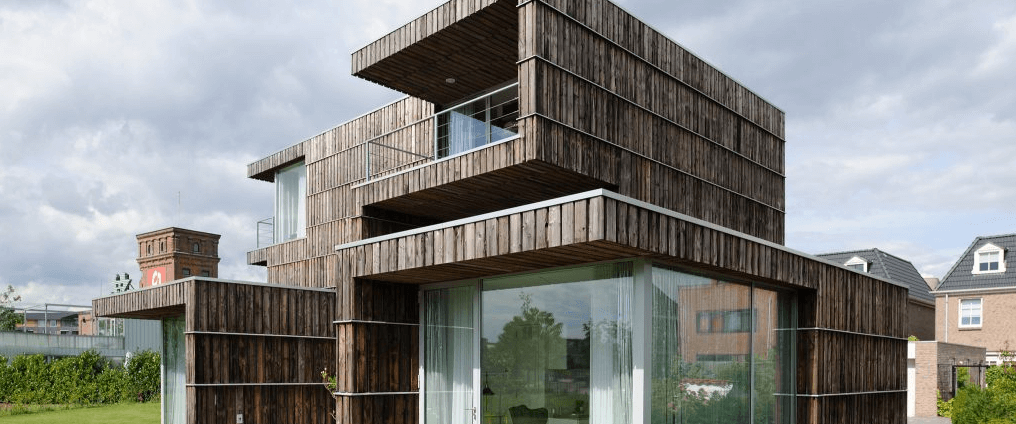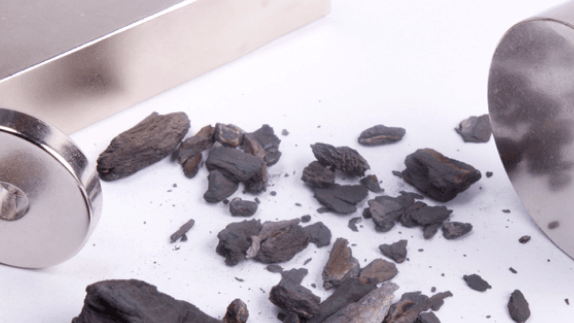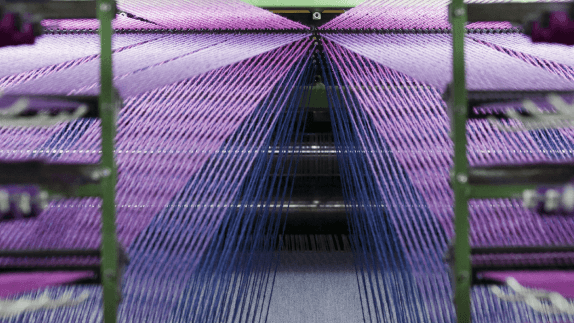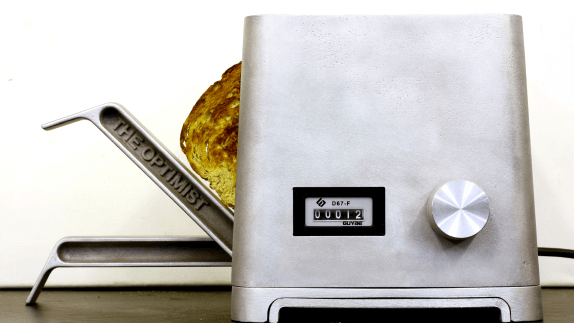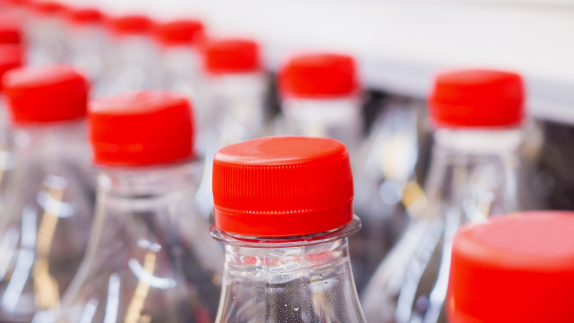
Villa Welpeloo is a house in the Netherlands constructed from 60 percent salvaged material. Google Earth aided the selection of the construction area based on accessibility to industrial waste materials.
“We have a materials in the wrong place problem” is an oft-quoted line from Cradle to Cradle pioneer William McDonough. Indeed, the majority of the resources found in products are simply ‘used’, rather than being ‘used up’. So the materials themselves are still out there, but frequently are either difficult to get to and recover, or can’t be aggregated in a way that makes their collection viable.
Google Earth helps us to identify waste stock in industrial zones
- Jan Jongert, architect and Head of Research, Superuse Studios
Villa Welpeloo is a house and art studio designed and constructed in 2005 by Superuse Studios. Whilst the house is certainly architecturally striking, there are two features of its creation that make it especially noteworthy. Firstly, 60% the house is made up of from materials salvaged from the local area, and Superuse employed a novel yet accessible strategy for finding this feedstock. “We spoke to people who have access to waste materials flows – Google Earth helps us to identify waste stock in industial zones", explains Jan Jongert, architect and Head of Research at Superuse Studios. The team were able to get their hands on good quality materials, which lend to the aesthetics of the building as well as having a story to tell. Steel was sourced from machinery previously used in textile production, a once prominent industry in the Enschede region of the Netherlands, where the house is located. The wood used in the façade was taken from 200 damaged cable reels, which gave pieces of a uniform size and shape. This wood would traditionally be turned into particleboard or worse incinerated, effectively shortcutting the usefulness of the material. The desire to salvage materials also led to the design process being conducted in parallel with the materialisation process. An awareness of the resources available locally influenced the way the architects actually designed the building.
This links to the second key feature of this build. The agency sought to re-use the materials they had found in a superior function, getting the highest use possible out of them. Moreover, Superuse Studios aim to improve the performance of resources whilst adapting them as little as possible. Jongert gives the example of the cable reel wood: “in its original form, this wood wasn’t intended to be used for another 35 years. But we found a method of treating it, called Plato, using three types of heat, provided as waste heat from a local powerplant. There was no chemical treatment.” This last point is key when considering the future cascade potential of this material.
Whilst it’s a popular example, Villa Welpeloo is more than a flagship project. The Superuse strategy of changing a material’s performance has not only been adopted as the name of the Studio, but has also been researched and used on around 90% of the agency’s 180 projects.
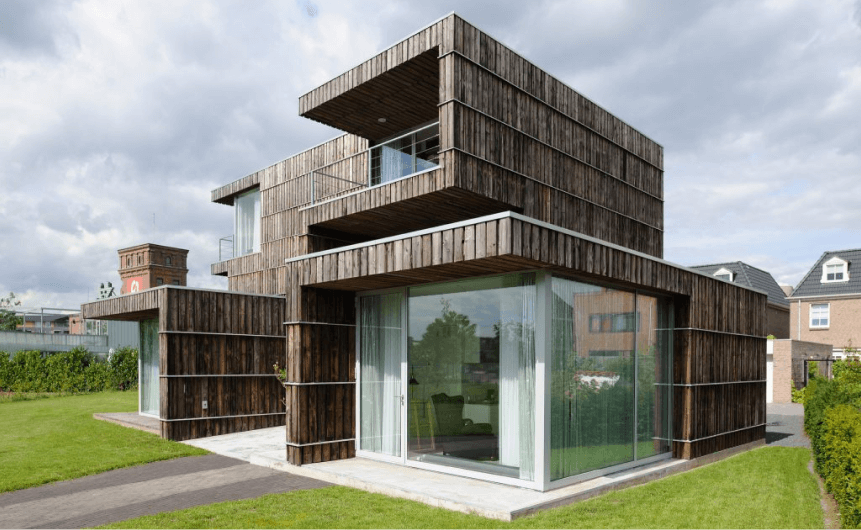
Villa Welpeloo. Image credit: Allard van der Hoek
The Superuse strategy has been researched and used on around 90% of the agency’s 180 projects
The successful materials recovery method has also been scaled up. Harvestmap.org positions itself as the ‘marketplace for professional upcyclers’, and is an open-source online tool created by Superuse. Visitors to the site can identify pools of plastics, textiles, wood, metal, chemicals and a range of other resources available to collect nearby. The related site superuse.org showcases publicly-submitted projects which incorporate materials re-use.
Platforms of this type appear to work best at a regional scale, and as such have sprung up elsewhere, for instance in the Opalis guide serving the area around Brussels.
The Villa Welpeloo building highlights the massive potential of unused or ‘misplaced’ resources. Improvements can clearly still be made, and Jongert sees the opportunity for for material brokers to improve communication to enable convenient disposal for one company, and valuable materials supply for another. The Studio clearly believes in the upcycling approach, and is developing the strategy and tools to put it into practice.
Biodiversity benefits
Villa Welpeloo’s use of salvaged instead of virgin materialsvirgin materialsMaterials that have not yet been used in the economy. displaced the need for further natural resource extraction, processing, and disposal. Reusing existing materials minimized the construction’s contribution to the key direct drivers of biodiversity loss, such as climate change and overexploitation of natural resources.
Image credit: Allard van der Hoek
